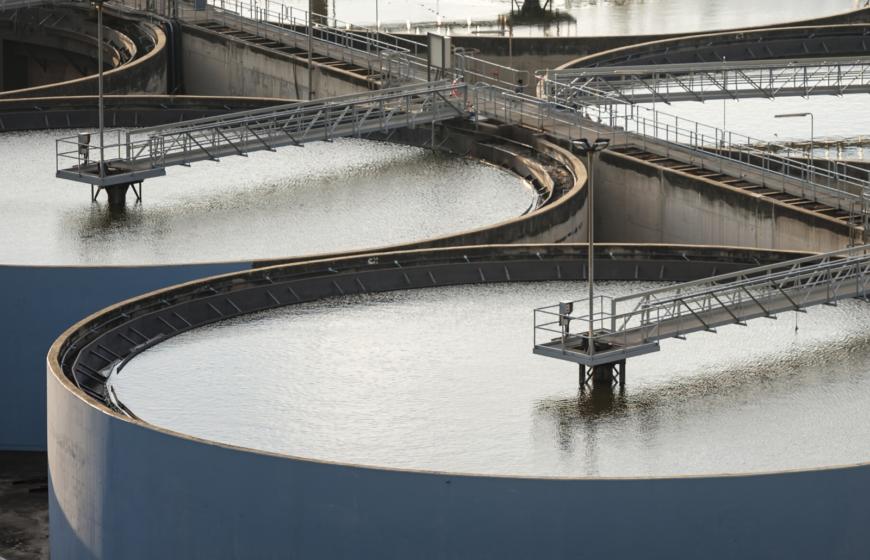- Home
- Applications
- Water treatment
Water treatment
Industrial and specialty gases play a large role in water treatment. They assist in preventing pollution of our rivers and contamination of our drinking water.
Industrial and specialty gases play a large role in water treatment. They assist in preventing pollution of our rivers and contamination of our drinking water.

Bulk liquid oxygen is often used to intensify aerobic waste water treatment processes and can be especially beneficial for various industrial waste waters.
The pipework and tanks at water treatment facilities often require maintenance or modification. For these purposes a range of shielding gases in cylinders will be used. Oxygen and acetylene are also in common usage for cutting steel pipes or for brazing applications in areas where copper pipe is used.
Carbon dioxide can be added to water to adjust the pH to be more acidic. It dissolves quickly in water to form carbonic acid and other salts. The use of carbon dioxide for waste water and reservoir water pH control is regarded as very safe in comparison to the alternative mineral acids for two reasons. Firstly, it is much less hazardous to handle than mineral acids and secondly it forms a buffered solution, meaning that an accidental overdosing of carbon dioxide will not result in a dangerously low pH value of the water. On the other hand, accidental overdosing of mineral acids would result in an extremely low pH causing significant safety risks and environmental damage.
One main role of a sewage treatment facility is to reduce the organic load on the water system that the processed water will be flowing into. This organic load is measured as total organic carbon (TOC). On almost every facility there will be regular analysis of the final water TOC to ensure that the discharge will not pollute the lake, river or ocean that the treated water is emitted to. These TOC analysers are often online instruments using high purity instrument grade air to oxidise the organic compounds in the water to CO2, where they are then measured using an NDIR detector. This high purity instrument grade air is a specialty gas and is often alternatively referred to as synthetic air or zero air and must be free of hydrocarbon contaminants and contain a low level of carbon dioxide.
Salts of heavy metals such as mercury, cadmium, strontium or lead can be highly toxic in drinking water even at extremely low levels. Great efforts are taken to avoid their entry into the water courses and legislation tightlycontrols their emission from factories. However, to ensure that drinking water is pure and safe to drink, it is analysed to be certain that these heavy metals are not present in harmful quantities. This analysis is most generally done in laboratories equipped with modern analytical equipment such as ICP-MS instrumentation which uses an inductively coupled plasma to ionise the metals and then detect them using a mass spectrometer. ICP-MS instrumentation consumes large quantities of high purity argon to create the high temperature plasma.
It is increasingly common to use anaerobic processes for water treatment. Similar to aerobic treatment processes, these rely on bacteria to digest the impurities in the waste water. However, the bacteria are different strains which work in the absence of oxygen. This results in the production of methane instead of carbon dioxide as a by-product of the water purification. This methane is either compressed and supplied as a clean fuel in the modern clean energy economy or burned in a flare. In either case, the purity of the methane produced or the emissions gases from its combustion in the flare are often measured using sophisticated analytical equipment which requires occasional calibration with specialty gases mixtures to ensure that the measurement is precise and conforms to relevant environmental or energy transfer standards.